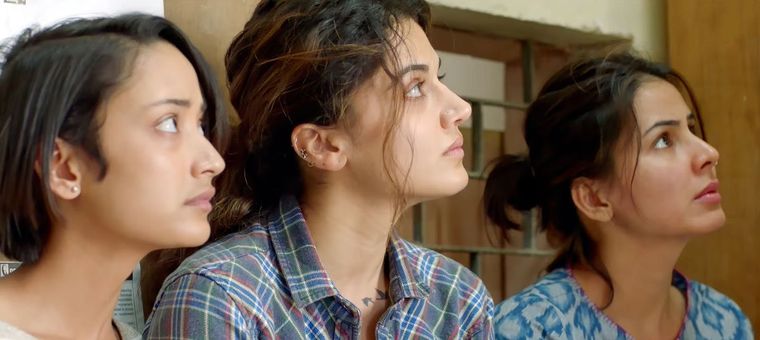WOMEN ON SCREEN are stepping out, going beyond the limits of home and patriarchy. They are rising, above inhibitions (personal) and conventions (social). They seek no pedestal but power and respect; they are no goddesses, just women, real and raw.
In Bengali cinema, for instance, you have strong female characters, like in Satyajit Ray’s Charulata (1964) and Kaushik Ganguly’s Bishorjan (2017), in which a Hindu widow from Bangladesh becomes the love interest of a Muslim from India and later takes on a dark and headstrong avatar from that of a docile young bride. In Marathi cinema, too, women-centric storytelling has evolved over the years. We now have Jhimma (2021), where the storyline revolves around seven women and their battles during a planned tour of Britain. Meanwhile, the leading ladies of Punjabi cinema are claiming their rightful space, both on and off screen. In a considerably close-knit industry, where the film financier calls the shots, women are taking it upon themselves to become producers and tell stories that they want to bring to the fore.
Ayushi G., department of media, University of Delhi, wrote a research paper on ‘analysing the portrayal of women in Bollywood cinema’, from “old classical Bollywood (1950s) to current Bollywood”. So, we had Mother India (1957), in which Nargis plays the dutiful wife and mother who is bound to a life of sacrifice, whereas Tabu’s character in Astitva (2000) walks out of her marriage to look for an identity of her own. Bollywood has since then churned out films like Queen (2013), in which a small-town girl asserts her independence and agency when she goes on a honeymoon all by herself after being dumped by her fiance a day before the wedding, and Pink (2016), which reinforced the message that a ‘no means no’, and even Pathaan (2023), in which Deepika Padukone’s character is cleverly etched out as an intelligence agent who is suave and sexy.
With more women filmmakers taking charge of the narrative and female actors venturing into production across all cinemas, there has been a significant shift in the way women are portrayed on screen. Director Aparna Sen (36 Chowringhee Lane, 1981, and Mr. and Mrs. Iyer, 2002) brought out some of the most versatile and authoritative women characters; so did filmmakers like Alankrita Shrivastava (Lipstick Under My Burkha, 2016) and actors like Alia Bhatt, who became a producer with Darlings (2022), a quirky tale of domestic violence.
But there is still a long way to go, especially when it comes to the south Indian film industry as a regional monolith, says Srinivas S.V., professor, Azim Premji University. “Among hyper masculine films from different southern industries, there has been only a trickle of films that have strong female characters,” he says. “We have films like Penguin (2020), a taut women-centric investigative thriller (in Tamil) based on a pregnant woman’s worst nightmare, alongside mainstream commercials like Pushpa (2021) and RRR (2022). Yet, the numbers are very low and always below that of superhero films featuring major male stars.”
Nonetheless, the women on screen are stepping out, mirroring and meeting the women off it.



